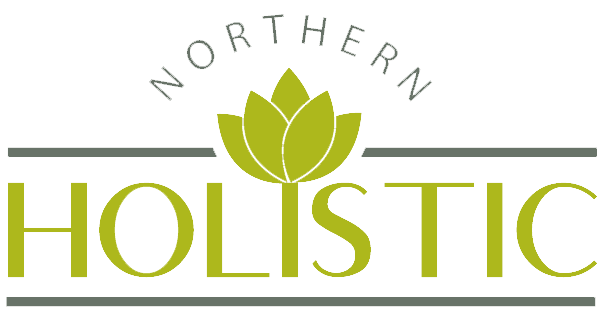Full Body Massage Berlin
Looking for a Full Body massage near you?
PLEASE NOTE THIS IS A PROFESSIONAL SERVICE ONLY

Based in Schöneberg Berlin, Northern Holistic specialises in Full Body massage. Also known as Swedish massage it aims to improve the blood circulation throughout the body. It’s highly effective in reducing physical pain, anxiety and stress. Five different massage techniques help to release bodily wastes and thereby improve physical and mental health.
Read on to find out more.
Book your Full Body massage with Northern Holistic now:
Independent Practitioner Pricing
Each therapist at Northern Holistic is a self-employed practitioner who sets their own prices. All practitioners maintain our high standards and values while operating as independent professionals.
60 Minutes
90 Minutes
1. What is a Full Body massage?
Being one of the most commonly requested Massage Techniques (also referred to as Swedish massage), its main purpose is to increase circulation and the flow of oxygen in the blood and muscles. Recovery time from muscular strain can be shortened by releasing toxins from the muscles. It stretches the ligaments and tendons keeping them supple and pliable. It also stimulates the skin and nervous system and soothes the nerves themselves at the same time. It reduces stress, both emotional and physical, and is suggested in a regular program for stress management.
There are five different techniques used in a full body massage therapy:
- Effleurage uses long, sweeping strokes over the entire body. A Swedish massage session usually starts and ends with effleurage
- Petrissage is performed by squeezing and kneading the muscle tissue between the thumb and the fingertips. This technique helps to relax the muscles and undo any knots by reaching deeper layers of muscle.
- Tapotement or percussion stroke is a rhythmic tapping whereby the massage therapist ‘chops’ the muscles with the edge of their hands.
- Friction is a kind of stroke that generates heat. Circular strokes or a series of short strokes break up adhesions in the muscle tissue. This can be achieved either by moving with the lines of the muscle tissue or against them.
- Vibration/shaking uses trembling motions to ‘wake up’ the muscle tissue in order to increase the blood flow.
2. What are the benefits of a Full Body massage?
This technique has a number of physical benefits and can also improve your mental well-being. Benefits of the massage are:
Stimulating blood circulation
Some Full Body massage techniques replicate the movements of the circulatory system. This encourages blood to flow faster and into areas where circulation might normally be slow.
Reducing pain
The massage uses techniques that improve circulation and increase body-wide relaxation. This can help to make many painful conditions more bearable.
Relaxation and eliminating stress
The strokes of the massage relax individual muscles, while the overall experience eliminates mental stress and promotes relaxation.
Detoxing
By performing the strokes toward the heart, Relaxing massage drains metabolic waste from muscle tissue. Some of the techniques used in Swedish therapy increase blood flow, which further quickens the removal of bodily waste.
Reducing anxiety and improving mood
There is evidence that Full Body (Swedish) massage reduces cortisol, also known as the ‘stress’ hormone [Lafferty D, Hodgson NA (2012)]. Reduced cortisol in the body will help to reduce anxiety and also improve the overall mood.
Balancing the digestive system
Full Body massage can improve circulation and relaxation of the abdominal and lower back muscles. This can have a positive effect on the digestive system and can help relieve symptoms such as constipation.
3. Is Full Body massage suitable for you?
If you suffer from chronically tense muscles in your shoulders, neck and upper back due to an office-based job, you will benefit from this massage. Patients with sore muscles will experience a speedier recovery after a Full Body massage.
Full Body massage will be the ideal type of massage if you experience mental stress, but also if you suffer from anxiety, depression or sleep problems.
If you are not sure whether a Full Body massage is right for you, please ask your Doctor.
4. How we can help you
Our therapy aims to increase circulation and the flow of oxygen in blood and muscles. This has the effect of slowly releasing toxins from the system.
At the start of a massage session your massage therapist will lubricate your skin with massage crème. He/she will then use effleurage strokes to warm up and to relax the muscle tissues. Your therapists may use hands, fingertips and knuckles during the Full Body massage. A standard Full Body Massage session lasts between 60 and 90 minutes and addresses most major muscle groups of the body.
5. Frequently Asked Questions
Why do they call it a Full Body Swedish massage?
Swedish massage was developed in the 18th century by a Swedish doctor named Per Henrik Ling. The Dutch practitioner Johann Georg Mezger applied the French terms to name the basic strokes. The term ‘Swedish massage’ is used only in English and Dutch speaking countries and in Hungary. Elsewhere it is referred to as classic massage, on which all other forms of massage are based.
What specific conditions is Full Body massage recommended for?
Full Body massage will be particularly beneficial to people with the following conditions:
- Chronically sore shoulders, neck and upper back
- Pain after sports injuries
- Chronic pain that comes with conditions like arthritis
- Joint stiffness
- Mental health issues
The massage is also known to be of benefit to patients with cancer or neuromuscular disorders.
Full Body (Swedish) massage vs shiatsu massage
Shiatsu is a Japanese term and means ‘finger pressure.’ The massage therapist uses varied, rhythmic pressure on certain precise points of the body. These points are called acupressure points. They are believed to be important for the flow of the body’s vital energy, called chi. Proponents say shiatsu massage can help relieve blockages at these acupressure points. Swedish massage techniques consist of a variety of movements, such as stroking, circulating, tapping, kneading or shaking applied to the whole body. Shiatsu massage, on the other hand, mainly uses finger pressure on precise points of the body.
Full Body (Swedish) massage vs deep tissue massage
The aim of Swedish massage is to increase blood circulation, reduce muscle tension and improve flexibility. Swedish massage therapy involves a series of long gliding strokes and utilises a firm pressure on the muscles. In contrast, deep tissue massage aims at affecting the deeper tissue structure of the muscles and the fascia. The therapy involves a series of slow strokes and applies deeper pressure than the Swedish massage. It is used to treat small muscle injuries. Both types of massage are suitable to treat chronic pain, muscle tension and help to reduce stress.
